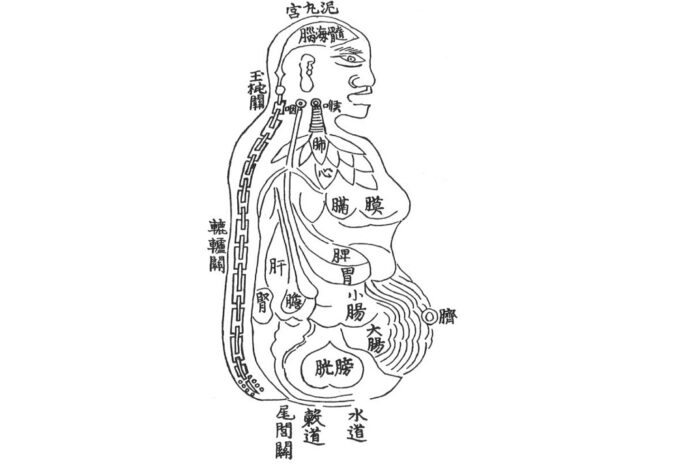The Beginning of For m and Qi 形氣之始 형체와 기운의 시작
Written By Jun Heo(許浚, 1539~1615), Translated by Namil Kim, Wung Seok Cha et al., Published by Ministry of Health & Welfare (Korea)
There is a saying by Sun Zhenren (孫眞人), “Mankind is the most precious of all living things in the universe. The round head resembles heaven, and the flat foot resembles earth; man has four limbs as the universe has four seasons, man has five viscera as the universe has five phases; man has six bowels as the universe has six extremes (六極), man has eight joints (八節) as the universe has eight winds (八風); man has nine orifices as the universe has nine stars, and man has twelve meridians as the universe has twelve hours.
Man has twenty-four acupoints as the universe has twenty-four qi. Also, man has 365 joints as the universe has 365 divisions; man has two eyes as the universe has the sun and the moon, man sleeps, and wakes as the universe has day and night; man has happiness and anger as the universe has thunder and lightning, and man has tears and nasal discharge as the universe has rain and dew; man has cold and heat as the universe has yin and yang, and man has blood vessels as the universe has spring water; man has hair growing as the universe has grass and trees growing, and man has teeth as the universe has metals and rocks. All these shapes are composed temporarily with the four greats and five constants as the fundamental foundation.”
Zhu Zhenheng once said, “The shape of a man is better to be short than long, to be small than big, and to be skinny than fat. The color of a man’s skin is better to be black than white, to be dark than pale, to be thick than thin. Furthermore, a fat man is rich in dampness, a thin person is rich in Fire; a pale white person is deficient of lung qi, and a dark person is rich in kidney qi. Every man is different in his complexion and shapes and therefore has differences in his viscera and bowels compared to others. This shows that different patients must be treated differently even if they show the same symptoms.
① In the Book of Changes Heavenly-Qian Chisel Measurement (乾鑿度), it is said: “The specific image of heaven comes from geon (乾), which can be classified into the great change (太易), great beginning (太初), great opening (太始), and great simplicity (太素). The great change is when qi is not manifested yet, the great beginning is when the qi starts to form, the great opening is when the form just begins to form, and the great simplicity is when texture starts to form. After form and qi are complete, a (痾) is then formed. A means chae (瘵), and chae means disease: disease comes from this. Humans originate from the great change and disease comes from the great simplicity.”
② In the Annotation on the Token of the Agreement of the Three (參同契註): “That which has not formed yet is called Hong-mong (chaos, 鴻濛) and the state of showing signs of formation but not yet separated is called Hon-ryun (chaos, 混淪). In the Book of Changes (易經) it is said, “The supreme ultimate (太極) is divided into two and forms yin and yang. Changes and the supreme ultimate refers to the chaotic state (混淪, 鴻 濛). Geon trigram (乾, meaning heaven in the Book of Changes) and Gon trigram (坤, meaning earth in the Book of Changes) together form the supreme ultimate. Thus, when geon and gon are discussed together, it is called Hon-ryun (chaos, 混淪) and when they are discussed separately they are called heaven and earth. In the Liezi (列子), it is said that, “The great beginning is the beginning of qi and the great opening is the beginning of form, and it means nearly the same thing.”

































